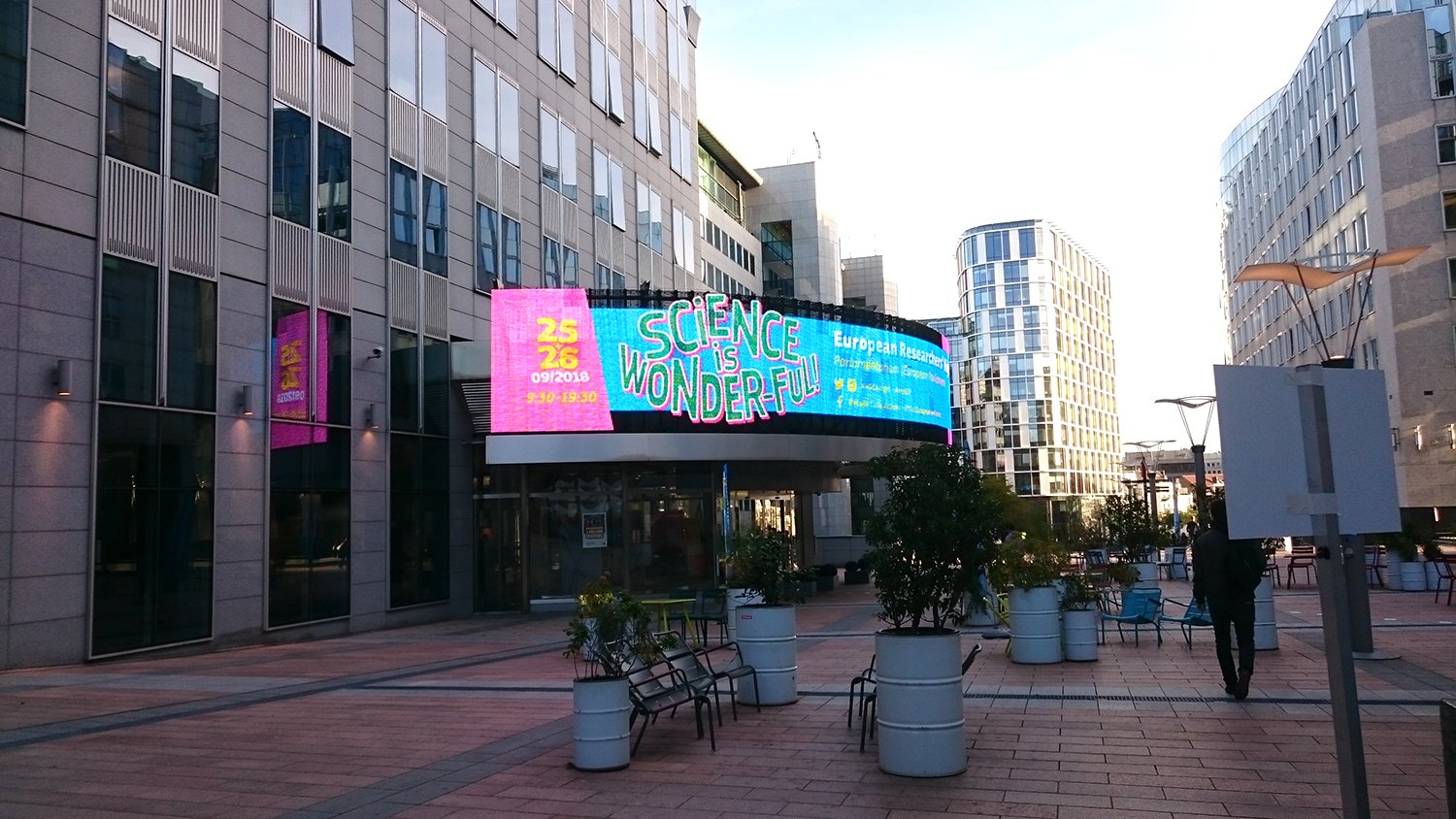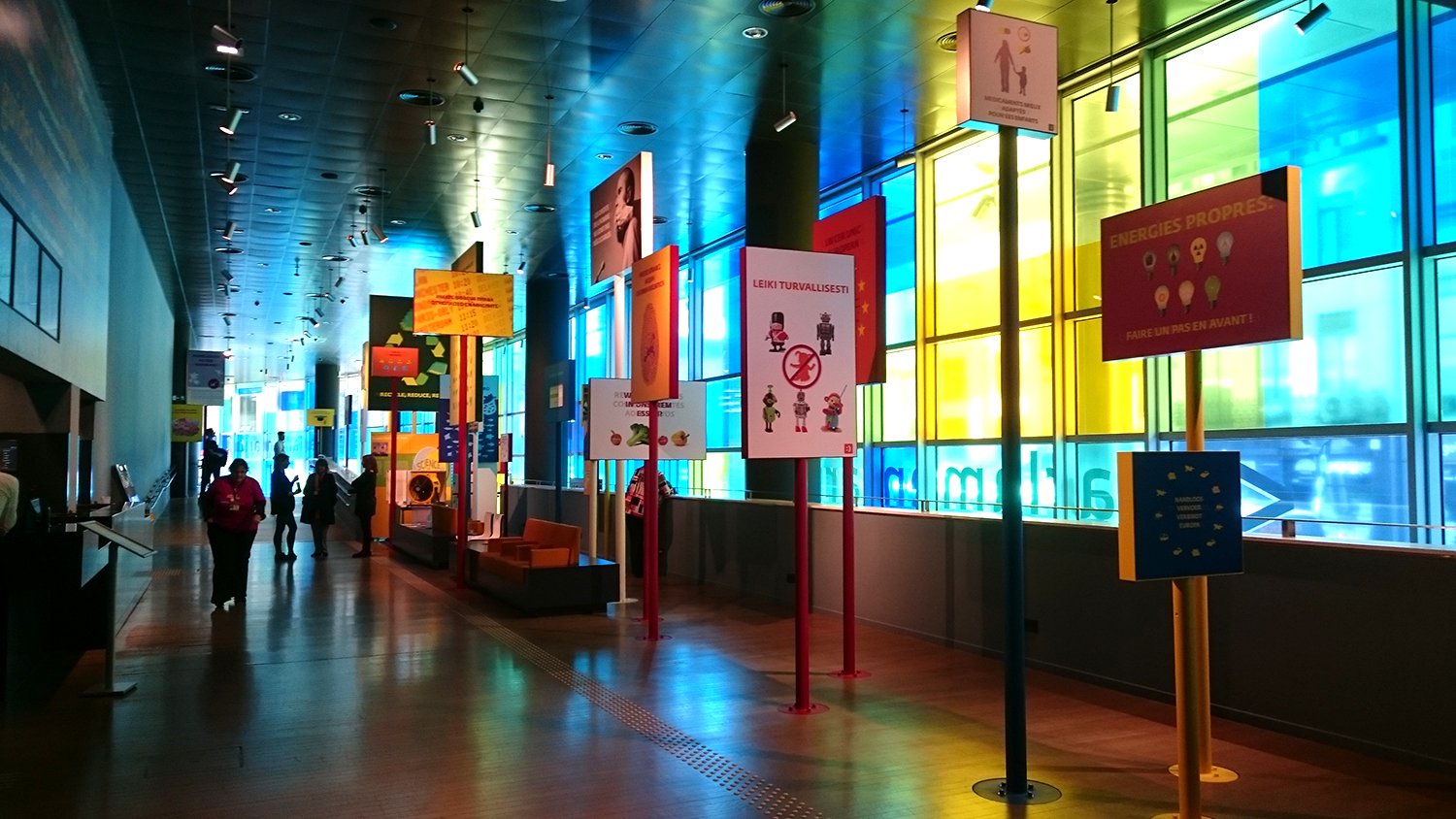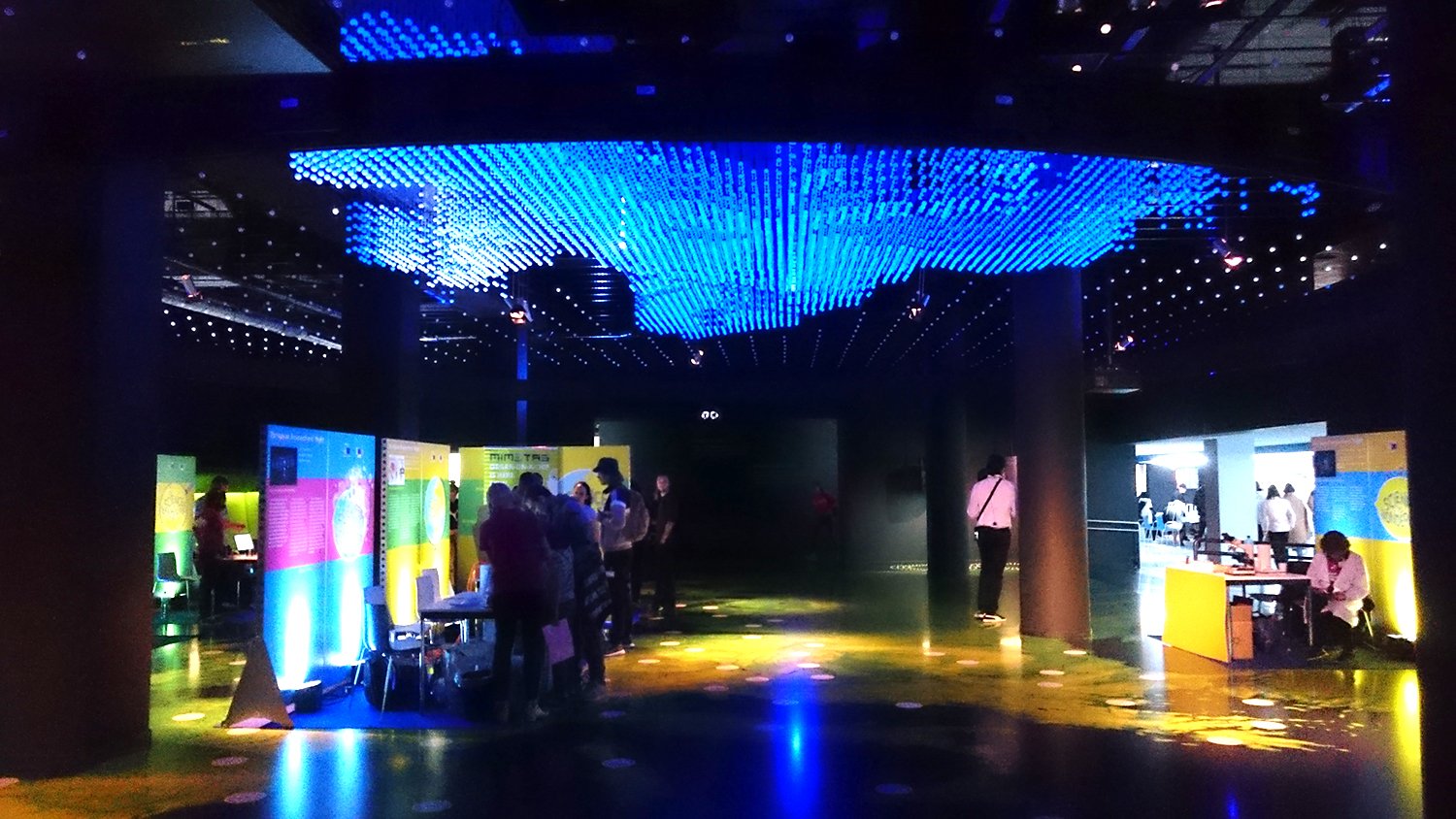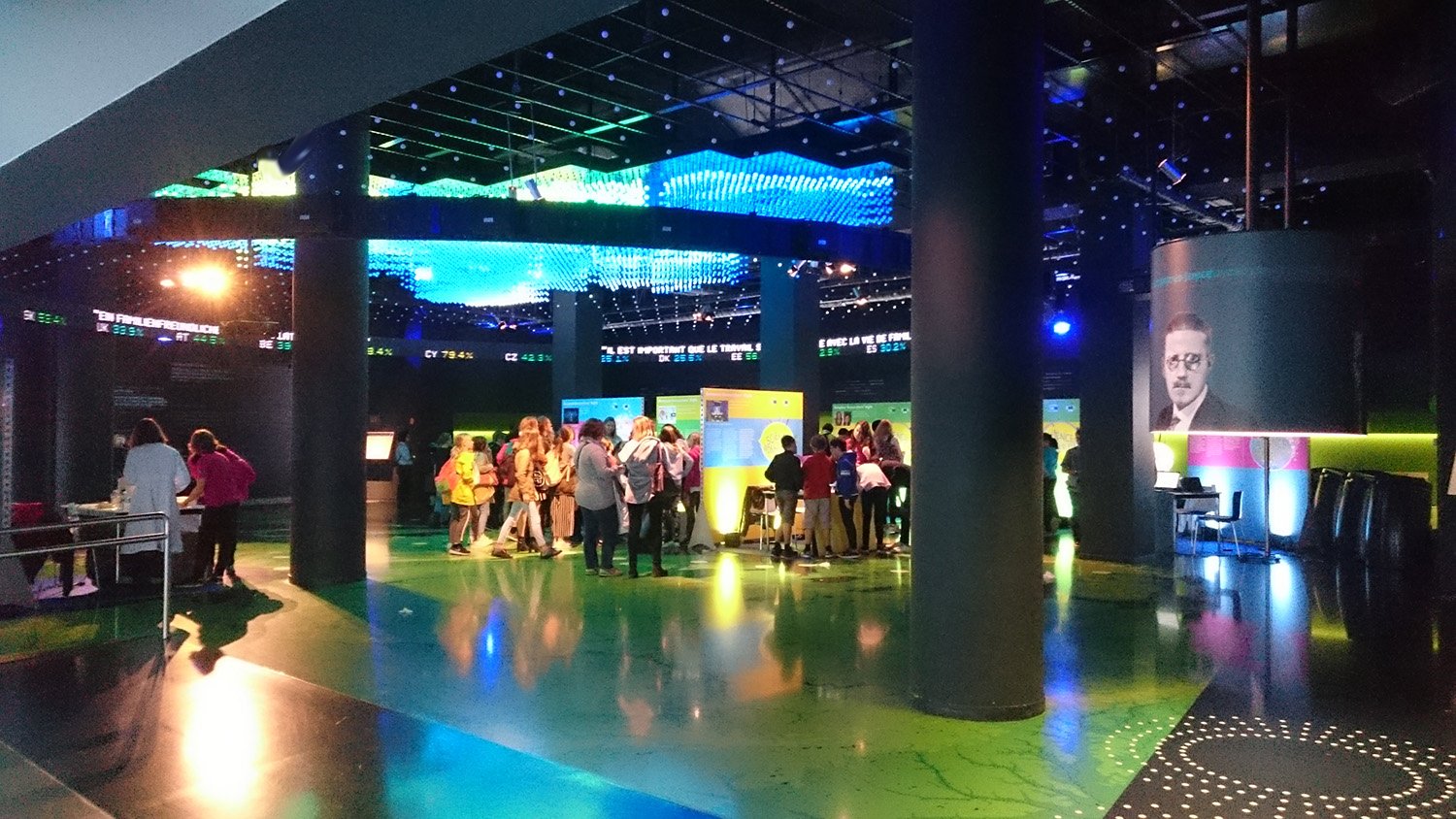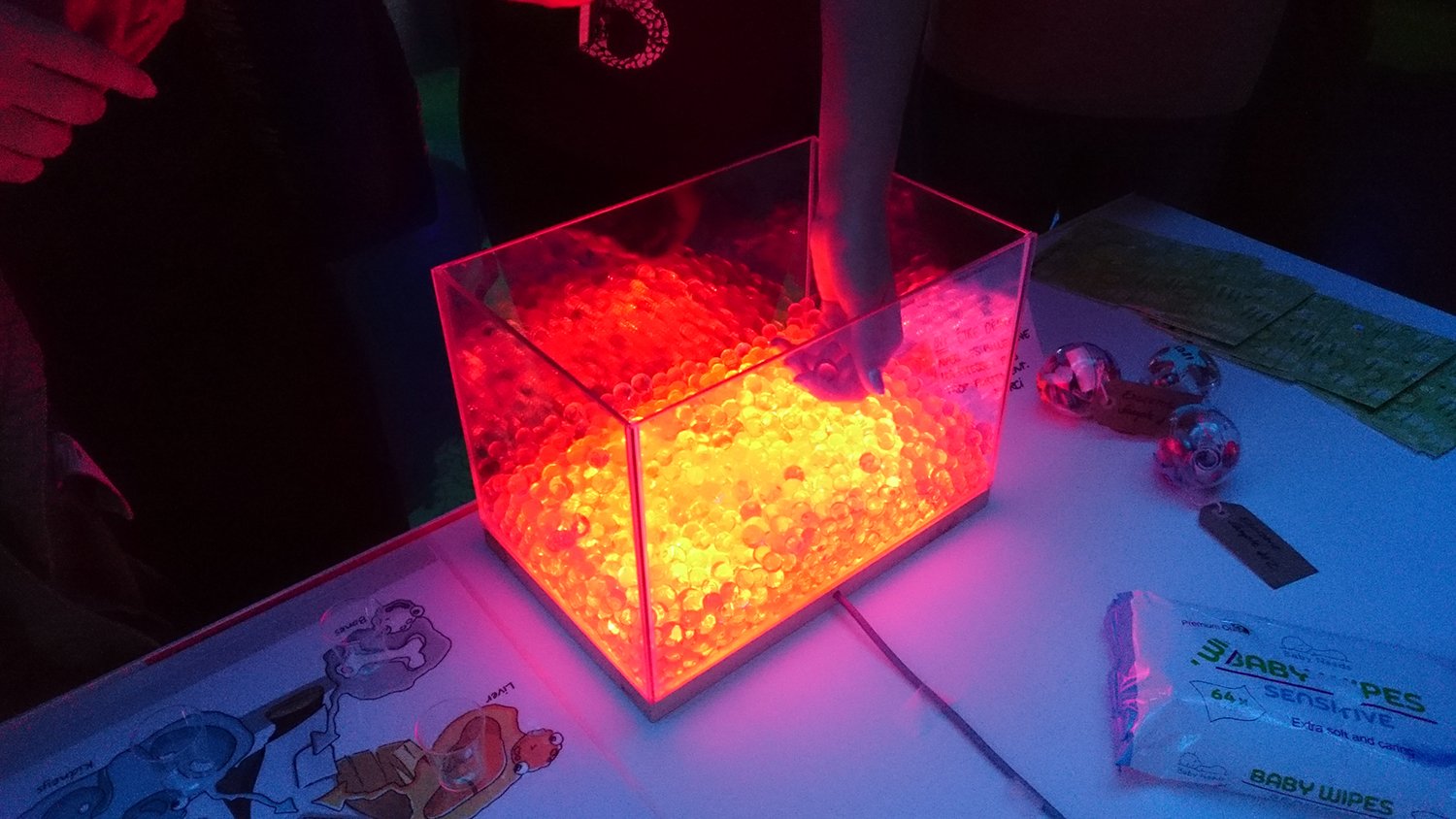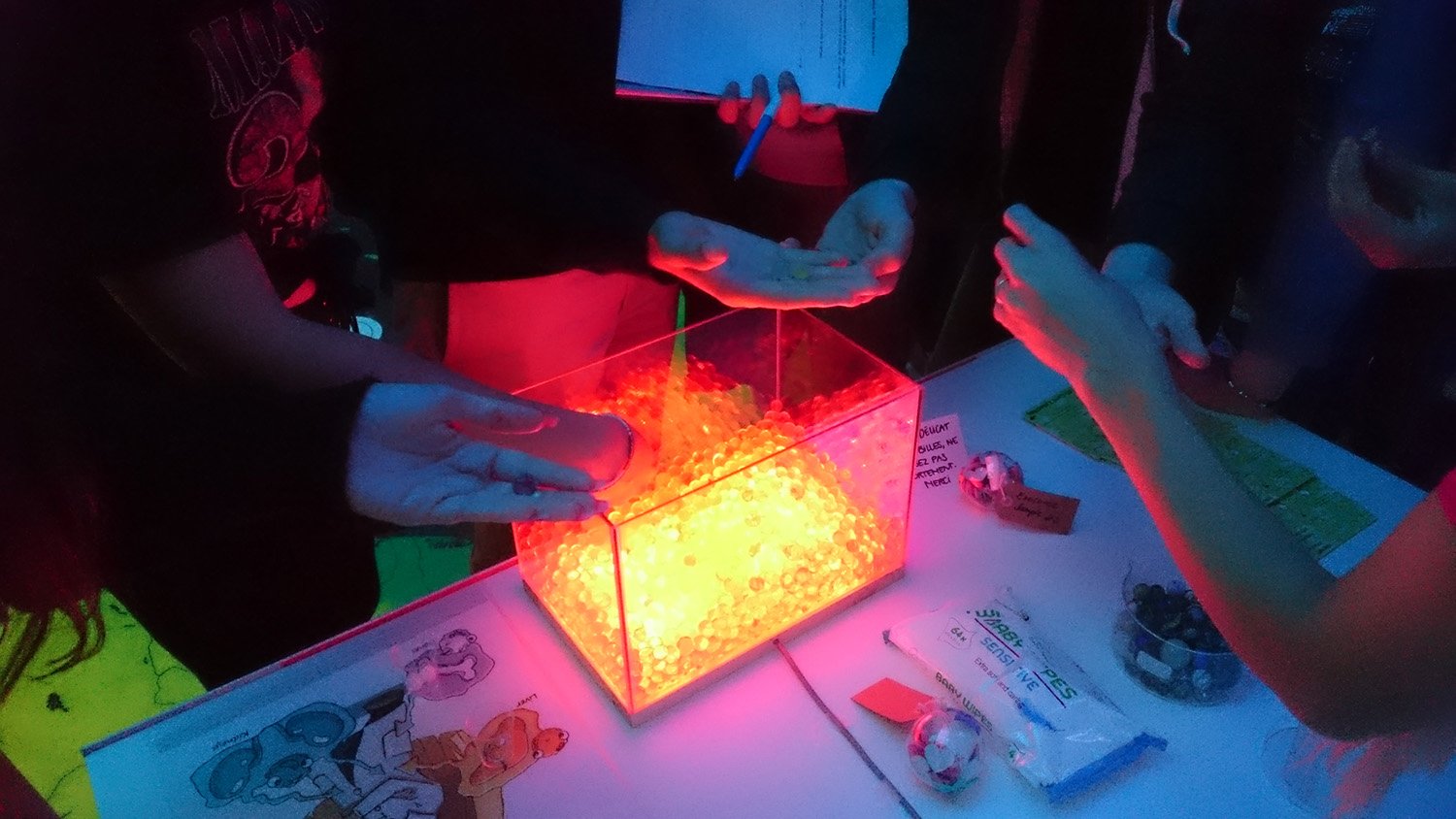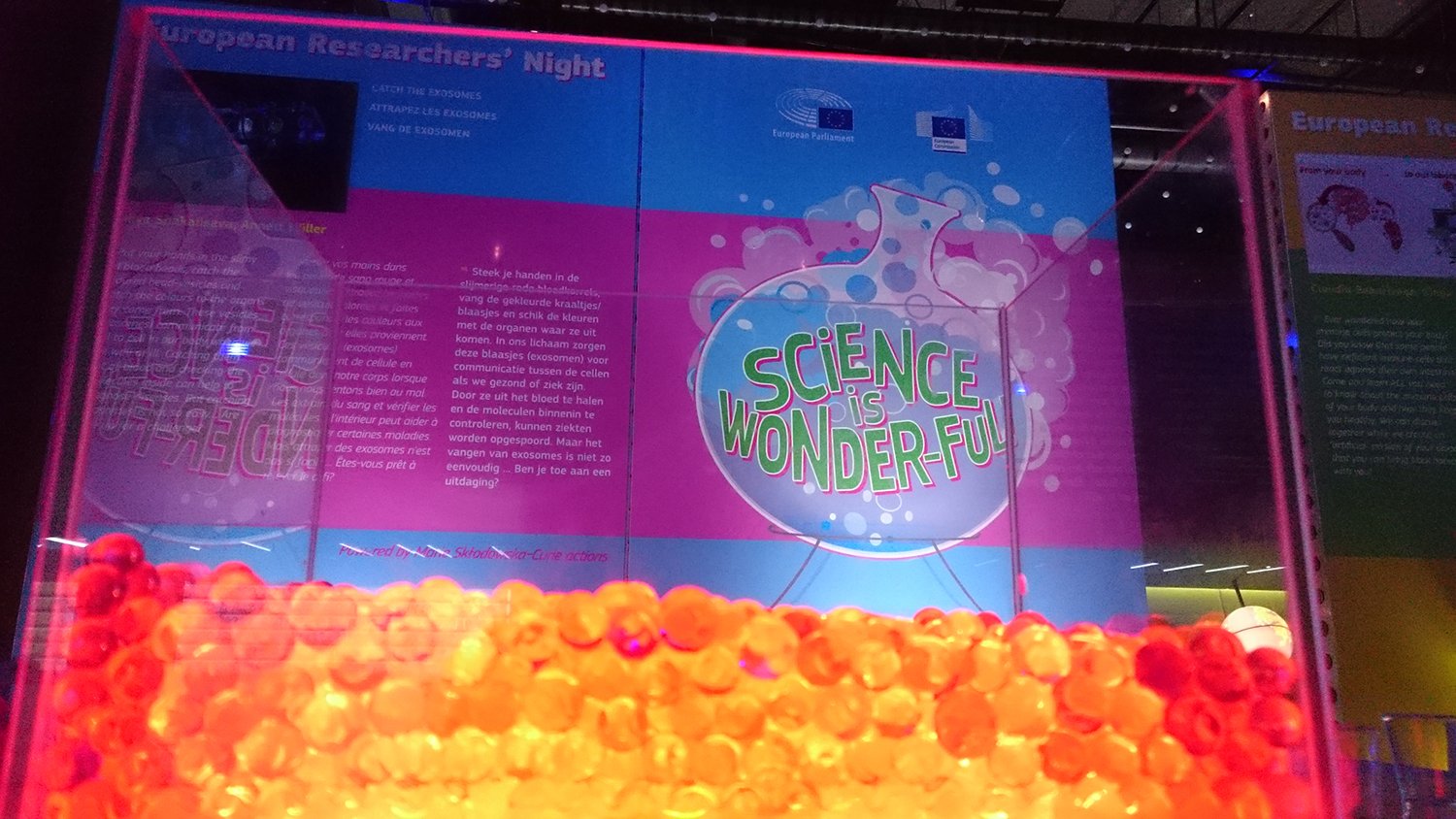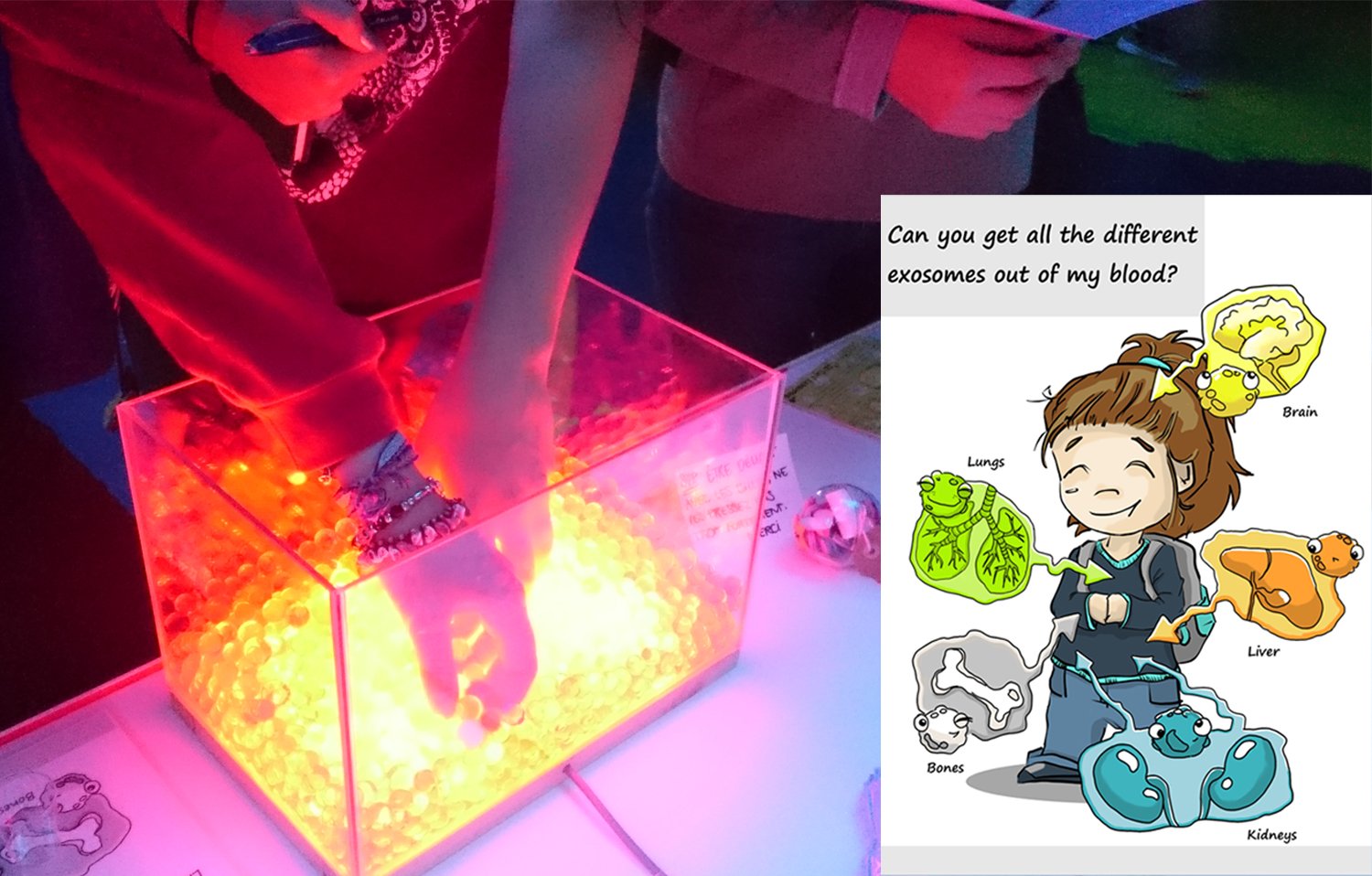Catch The Exosomes” at European Researcher’s Night – Outreach Case Study - Part 2
As I already mentioned in my last post Yuliya had even bigger plans than just the educational booklet. She wanted to join the “Science is Wonderful” event at the European Parliament during European Researcher’s Night. In this post I want to share with you the science communication tools we used during the event.
What is European Researcher’s Night?
European Researcher’s Night is organised by Marie Skłodowska-Curie Actions (MSCA) every year on the last Friday of September. It takes place across the EU Member States and Horizon Europe Associated Countries. The goal is the communication and promotion of research. If you are interested in finding out more about MSCA or you would like to join the next addition of this event you can find more information here.
The Science is Wonderful event in particular has a focus on bringing research and innovation to primary and secondary schools.
Interactive Science Communication – Having fun with Orbeez.
To join the event, we needed a way to make exosomes not only visible, but also touchable and create a way for the public to interact with them.
In our search for some inspiration, we came across the UK Society for Extracellular Vesicles. They provide a guide for interactive public engagement tools for scientist to communicate extracellular vesicles (EVs). The idea to use Orbeez to represent exosomes and blood really kick-started our imagination.
Orbeez are small, non-toxic and biodegradable pellets that grow significantly in size when they get in contact with water.
In the original game red jelly balls represent the blood and the other colours represent the EVs. The goal of the game is to remove the EV’s from the blood and match them with the organs they are coming from.
However, Yuliya’s research is focusing on solving the problem of separating exosomes from the blood more easily. So, we needed to show somehow that getting the exosomes out of the blood was difficult.
We decided to put the Orbeez into a glass container and put a LED strip with multiple colours underneath, which already made the whole thing look kind of magical.
We turned the LEDs red and so all jelly-balls, no matter their own colour appeared red. We then asked the person to get the exosomes out of the blood and match them with the organs. An impossible task. With this setup we could continue explaining that this was exactly what Yuliya was struggling with and by changing the colour of the LED’s we could now make the exosomes visible and separation much easier.
What are Exosomes and why are they so interesting?
To explain this part, we needed a bigger model of an exosome. So, we prepared some transparent Christmas ornaments. We put stickers on the outside to represent surface proteins. Inside we put, next to some other things, the most important item: The secret message!
Whenever someone removed an exosome jelly-ball from the container we’d say: Look, imagine what you have in your hand is the same as I have, only this one is bigger to make it easier to see. We explained that exosomes play a role in cell-cell-communication and asked the participant to open the ball and find the secret message.
When they did it would either read: “I come from a healthy cell” or “I come from a cell that has cancer”. At that point participants would start asking questions and Yuliya was of course happy to answer them.
I still remember one woman opening the ‘exosome’ and being absolutely fascinated. She said: “This is so wonderful. I think, I really understand now and it makes me want to learn more.”
For me, that was the most rewarding and motivating moment during this whole event.
But apart from that, the whole event was amazing. Filled with so much wonder and creativity. If you have a chance, you should really visit one of these events. Underneath you find some more pictures to get an impression of the general mood.
